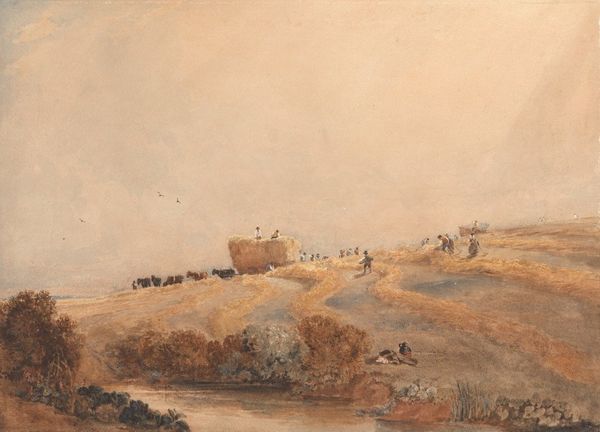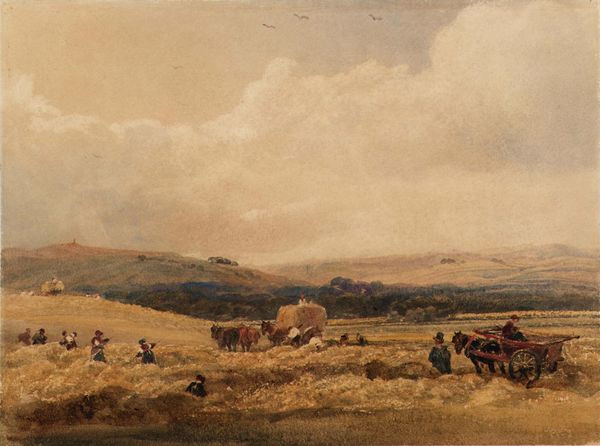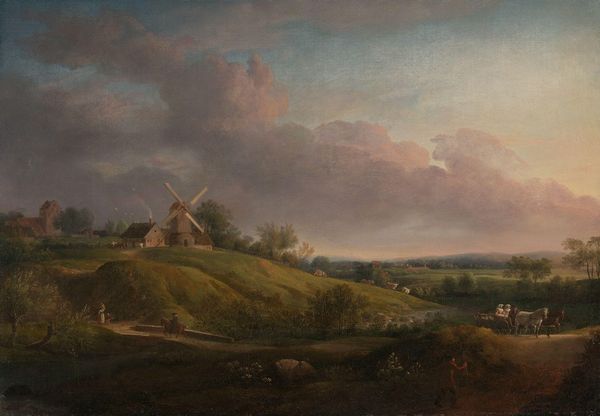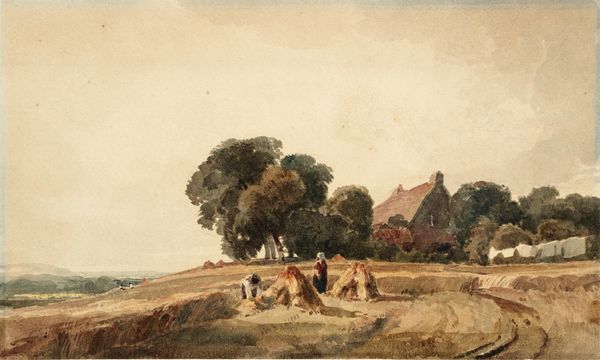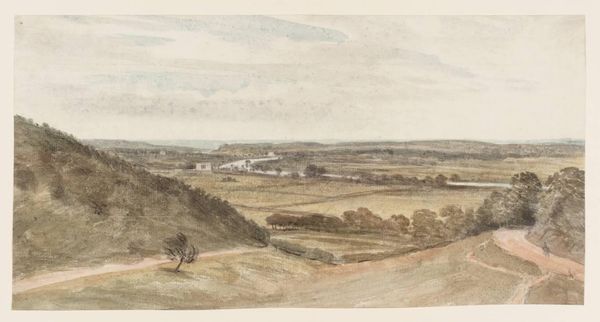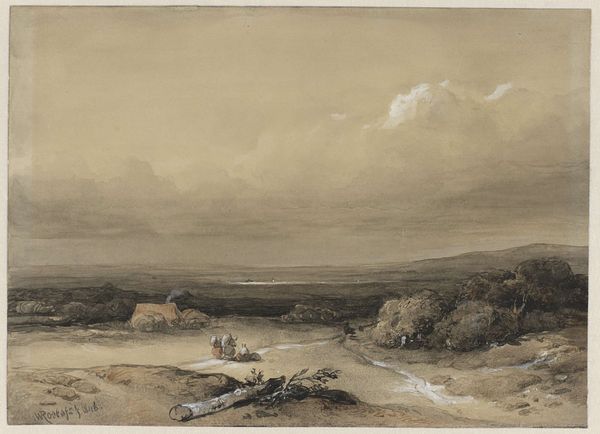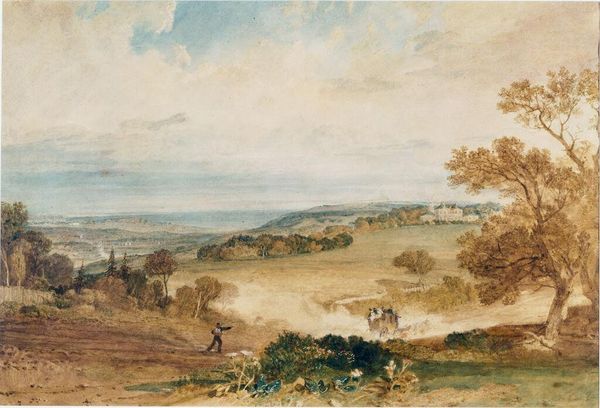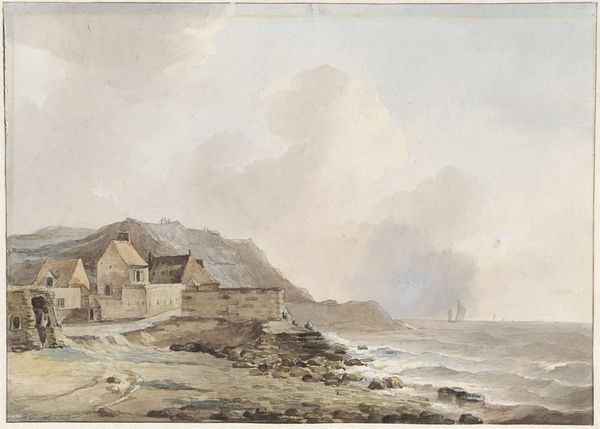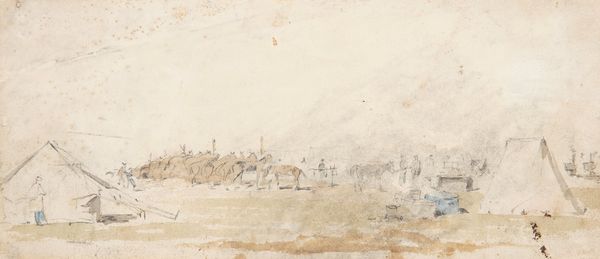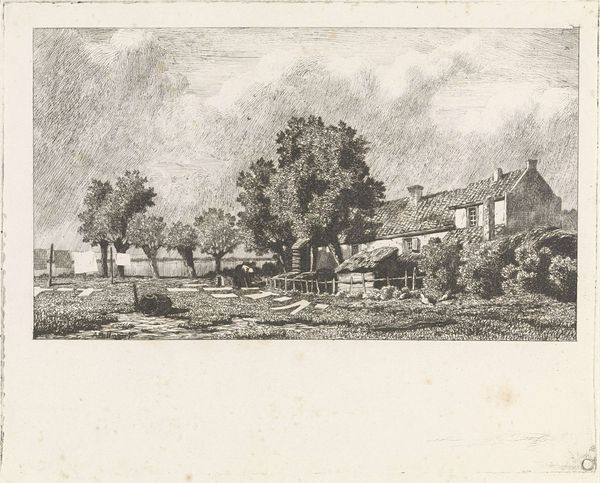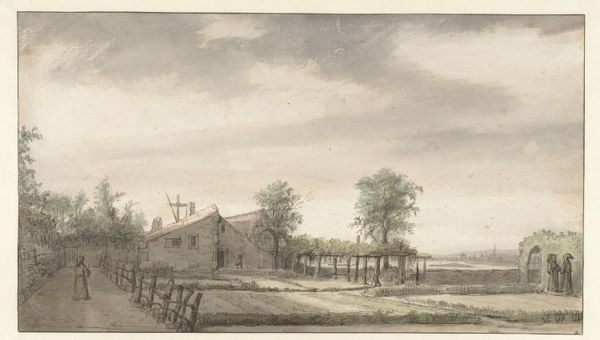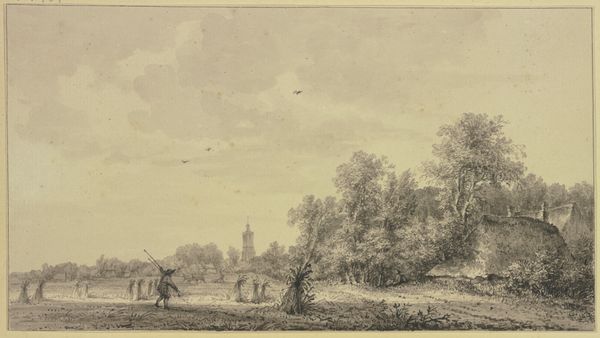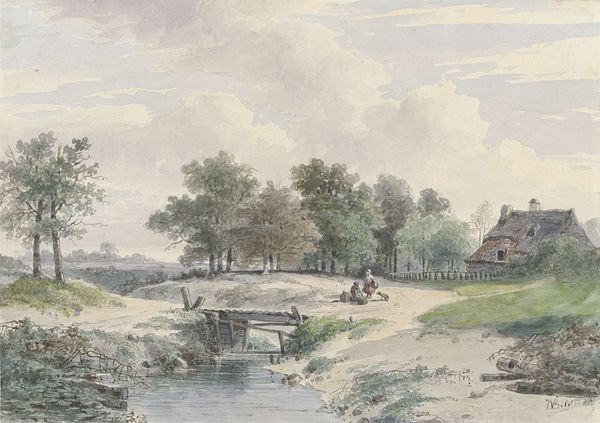
Dimensions: support: 321 x 619 mm
Copyright: CC-BY-NC-ND 4.0 DEED, Photo: Tate
Curator: Oh, this is lovely. It feels like a warm hug, doesn't it? The color palette is just so comforting. Editor: We're looking at Peter De Wint’s "Harvest Time, Lancashire", a watercolor piece in the Tate. De Wint, active in the early 19th century, really focused on landscapes, and this one gives us a glimpse into agricultural labor. Curator: It’s interesting how the laborers seem so small in comparison to the land itself. Makes you think about the sheer effort and cooperation needed for a harvest. Editor: Indeed. Consider the social context. Land ownership, rural economies – these were central to British life, and art like this reflects those power dynamics and the realities of rural life, rendered in watercolor. Curator: And you can almost feel the sun beating down, can't you? Makes you wonder about the artist's relationship to this kind of scene. Editor: These landscapes were often commissioned by wealthy landowners, reflecting and reinforcing a particular view of rural England, one that glossed over some of the harder realities of agricultural labor. Curator: A view, perhaps. But it’s also a lovely image of people working together; a celebration of the harvest. Editor: There's always more than one way to look at it, I suppose. Curator: That's what makes art worth thinking about. Editor: Precisely. It's the material reality meets the artist's vision.
